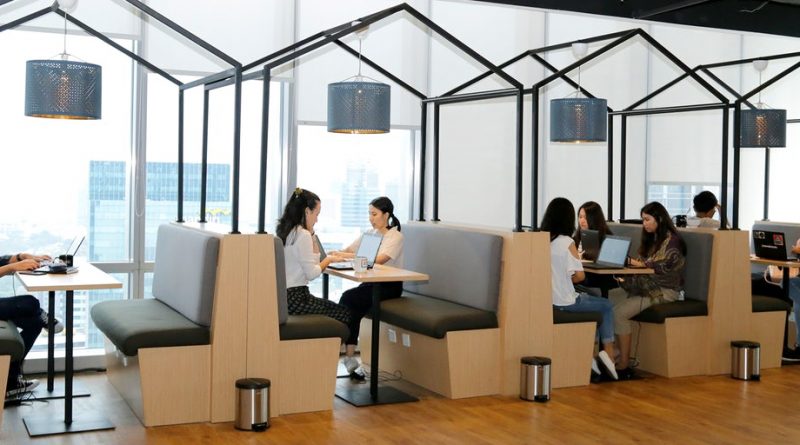At Zilingo, Pivoting for Growth in a Pandemic | Sponsored Feature
SINGAPORE — Founded in 2015 as a fashion and beauty marketplace for consumers in Southeast Asia, Zilingo set its ambitions to level the playing field in the fashion supply chain that traditionally prevented small businesses from having financial opportunity and entrepreneurial growth. In 2017, Zilingo’s B2B platform was launched in Southeast Asia to enable procurement of raw material, ready-to-ship products and to source factories and manufacturers.
With office locations in Singapore, Indonesia, Thailand, the Philippines, India, Sri Lanka, Bangladesh and Hong Kong, the company began to empower manufacturers with tools, access and incentives to scale competitively and responsibly, growing their customer base of over 75,000 merchants and 6,000 factories across the region.
However, following the outbreak of Covid-19, Zilingo reported that over 25 percent of fashion MSMEs in South and Southeast Asia shut their businesses. In a strategic move to adapt to the ongoing crisis, the company expanded its B2B offerings to include health, home & living, essential goods and PPE categories on its wholesale platform, Zilingo Trade.
Having sharply reassessed the evolving needs of its partner businesses along the entire supply chain in the last few months, they remain focussed on two core propositions: enabling B2B commerce efficiently and helping merchants access the critical digital services to ensure seamless operations whilst continuing to offer their marketing and financial services alongside.

Zilingo Co-Founder and CEO Ankiti Bose | Source: Courtesy
Now, BoF sits down with Zilingo’s Co-Founder and CEO Ankiti Bose to hear more about the challenges and opportunities ahead as they look to evolve their services for clients to navigate fashion’s future in Southeast Asia.
What was the vision for Zilingo and its overarching mission when starting out in 2015?
When Dhruv Kapoor and I first founded the company, we recognised that many merchants across Southeast Asia faced bottlenecks that limited their reach and overall business operations. We wanted to bring in equity and transparency to the process, so that merchants, whether small or big, receive a level-playing field to trade efficiently.
Zilingo was born out of this market need and we began by introducing technology into traditional fashion manufacturing, which had resisted change for generations. We created an operating system for the fashion supply chain that connected different steps of the sourcing process in a single, transparent view. We then placed it on an API software that our customers can access, allowing Zilingo to collect data points and then act on insights that enable efficiencies in sourcing, QC, speed and credit terms.
How has Zilingo evolved its service offering since 2015 and why?
Zilingo’s goal has always been to use technology to drive positive change, removing inefficiency, opacity and waste by aggregating global demand. We started out offering our services in the fashion supply chain with a section devoted to the B2C marketplace. However, as we grew, we began to perceive the hurdles that businesses and sellers face in the market, across the global supply chain network in conducting their day-to-day operations, from sourcing, manufacturing and logistics to marketing and financing.
Eventually, we introduced our B2B offerings alongside our B2C business arm, through which we offer: the Zilingo Trade platform, which enables seamless trade between B2B buyers and sellers; Zilingo Marketing Services, which offer end-to-end marketing and content production solutions with the quality of a global production house; Zilingo Financial Services, providing businesses access to the required capital to scale with customised credit plans via its transparent platform; and Zilingo Factory, or nFactory, through which we develop and deploy Software as a Service (SaaS) for factories, suppliers and businesses to improve operational efficiency and help sellers trade efficiently.
Our B2B offerings have worked well for us as we have witnessed our B2B buyer base grow by 12x and acquired 40,000 new buyers throughout the Covid-19 situation. In the last year, leading up to March 2020, our B2B monthly transactions also shot up 3x times.
What challenges do brands face in navigating the Southeast Asia market?
The supply chain in Southeast Asia is often encumbered with opaque and outdated business processes, harmful environmental impacts and exploitative labour practices, which not only has a detrimental effect on local workers but can also exclude small brands from financial opportunity and entrepreneurial growth in this market.
However, with fast logistics, secure payments, free analytics and unprecedented access to buyers, we turn small sellers into competitive players in the global marketplace. We then incentivise suppliers to grow responsibly by providing access to capital and helping them market their products around the world.
With Zilingo’s B2B platform, we have helped increase more sustainable sourcing options for merchants and we have extended financial support to them and businesses to regulate payments and increase in sales by offering Buy Now Pay Later and Advance Payout options.
What challenges and subsequent learnings have you faced during the pandemic?
One of the main challenges the pandemic posed is that we have no visibility in the future course of things as the situation is continually developing. Then, the fragile state of the economy and its subsequent confused and reluctant responses from the market, restrictions and limitations in the trade network, and change in consumer behaviour with respect to calculated spending habits, are all contributing to a sense of uncertainty and the difficulty in conducting normal operations.
During the recovery phase, we realise merchants will opt for digitalisation to help.
During the recovery phase, we realise merchants will opt for digitalisation to help in business recovery. Implementing new technologies or going digital is the need of the hour for most businesses and merchants. We are also seeing new opportunities in areas like catering to new demands for PPE and essential goods, while other B2C SMEs are bringing their products online for e-commerce as more and more consumers are shopping online. All in all, pivoting to acclimate to the changes that the new normal has brought about is imperative for businesses in the current scenario.
We are living in a reality where the biggest card that we have is agility or the ability to adapt to anything this pandemic and the year as a whole is throwing at us. We have to dive in and solve problems as they come, as there is no set room with ready answers to problems that surface.
How is Zilingo supporting its clients during the crisis?
It’s fundamental to our mission as an enabler to provide comprehensive businesses solutions across software, logistics, marketing and payments for our partner merchants, sellers and businesses.
Internally, we have shifted to remote working and digital solutions to continue to provide our partners with solutions during the pandemic. For example. our product and service teams are catering to more customers and their evolving needs during these times as they adjust to working and servicing remotely. Our sales and customer service teams are now selling remotely via VC and telesales, and our Marketing As A Service (MAAS) team has seen increasing demand for digital marketing services, which can be delivered online.
We’ve also opened the Zilingo platform to enable commerce in new categories and are seeing a lot of early traction from FMCG in the Beauty category, while Home & Living and Essential products on both B2C and B2B commerce is gaining increased traction as more merchants are aligning their offerings to adjust to evolving consumer behaviour.
What are your hopes for the future?
With any crisis, we are faced with new challenges, but the situation also breeds new opportunities. Similarly, the need to reinvent and adapt to a new normal post-Covid will drive developments in technology and will lead to innovations that could considerably improve the standard of living altogether.
The crisis has indirectly forced digitisation on a lot of industries, especially those in B2B commerce that would have otherwise taken 5 to 10 years to develop. These industries will see a rapid digital transformation in the next 2 to 3 years, or even sooner. Old school trading, physical sampling, contacts and invoices will be done away with.
As far as the global supply chain is concerned, there will be no choice but to adopt technological solutions into payments, logistics, supply chain, products and trade as we gradually come out of the crisis. As a result, a lot of inefficiencies will be filtered out through automated processes.
We have also witnessed AI’s nascent steps in pushing frontiers but now, I expect to see increased strides in this field that could eventually upgrade community development altogether and considerably improve the overall quality of life, even in the most remote areas with limited access.
This is a sponsored feature as part of a BoF Partnership.



:quality(70):focal(1285x296:1295x306)/cloudfront-eu-central-1.images.arcpublishing.com/businessoffashion/5SSPGBPPBZBBBEFX7T2E4ZFEMY.jpeg)
